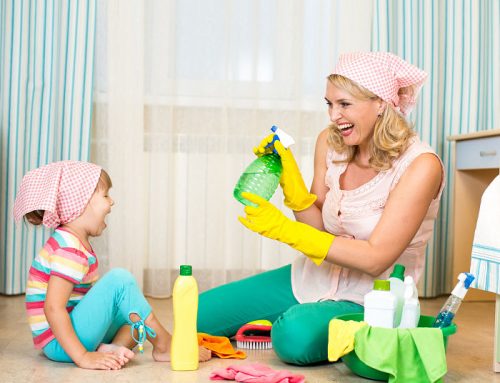It’s cold outside and kid clothing is ridiculously cute! I mean have you seen those animal snowsuits with the adorable hoods? How sweet and not to mention it’s a wonderful photo op to share on social media! We have all read the articles on car seat safety and why winter gear can be unsafe for kiddos to wear in the car. We all know how to do the pinch test and we can recognize loose straps a mile away. Every person from the American Academy of Pediatrics to the NHTSA (The National Highway Traffic Safety Administration) has something to say about this hot, or should I say, cold topic. So how do we make sure the chest clip stays in tact and works properly when we add in a puffy winter coat? There are tons of articles circulating about car seat safety in the winter but very little actually give some effective ideas on ways to actually keep warm without those snuggly hazards.
This video of a child in a car crash at just 30 MPH is super hard to watch but necessary to reinforce the scare factor and remind us to take that extra second in the morning to make sure our kiddos are safely secured.
Winter jackets can add up to 4 inches of extra fabric between the body and the straps. The Car Seat Lady puts those 4 inches into perspective for us. “Imagine wearing pants that are 4 inches too wide in the waist to a job interview, or walking a puppy with a collar that is 4 inches too wide at the neck, or putting your newborn in diapers that are 4 inches too wide at the leg holes…you’re gonna care about those 4 inches” she says. Just thinking about extra room in a diaper makes me cringe, but it sure helps me see that just a little extra room can in fact leave a whole lot of room for trouble.
Adults can stay warm by sipping our hot coffee or by that magical warmth that radiates from the seat making you feel like you just peed yourself, but what about the precious cargo in the back? How do we keep them warm and most importantly, safe? Sure we can grab extra blankets to lay over their laps; but if your morning is anything like mine, we are frantically scrambling around and forgetting key basics, so the thought of remembering that bag full of extra clothes or warm blankets purposely placed by the front door, will probably slip right pass your exhausted mind. And, what about that extra plush blanket laying frozen cold in the back seat, well, leaving it in the car defeats the purpose entirely.
So, what do we do? How do we keep the littles warm in winter? Well, you could buy that car seat approved jacket that sells for $100. But every parent knows that’s a whole bunch of money to spend on a coat for a child who grows faster than Pinocchio’s nose when telling a lie. So, what else could we do? Whether you are frost bitten in New England or experiencing a cold front in Florida, everyone experiences a drop in temp at some point in the year.
Babies, toddlers and older children all need to dress appropriately when the weather changes but there are different ways to address the cold weather based on age.
Babies lose heat more quickly than adults, sometimes as much as four times more quickly. An article by Children’s Hospital of Philadelphia states, “when babies are cold-stressed, they use energy and oxygen to generate warmth.” The good thing about infant car seats is the ease of transporting the seat indoors while the base stays strapped in the car. This is such a life saver and super convenient. This allows us to properly dress and blanket the baby while indoors, keeping their body temperature just right while we head to the car. It is simple to remove the blanket when we think they are too warm and just as easy to add another one if need be. Babies are pretty content with the basics so if they are hot or cold, they will let you know. Yes, having their car seat inside may be annoying when you have a small entryway, but they are worth the clutter when the temperature drops and we are able to securely fasten them without the weather making it more difficult. It’s the toddlers and the older children that can take control of removing clothing (I can’t keep mittens on my child for the life of me!) and complain about the elements.
I was born in New York and grew up in New England so I am very aware of just how cold it can get. We recently moved to Kentucky and surprisingly we are experiencing cold temps just like in the Northeast. So how do I keep my 3 year old safe in the car? Well, I have learned a thing or two while living up north and by sending my child to an outdoor forest school here in Kentucky (yes they exist, and yes they are outside during all elements, and yes there are so many amazing benefits, and yes my 3 year old will freeze if I don’t dress him properly).
One major thing I think I have mastered (because the teachers said we are the best in class!!) is layering. If you add layers into your clothing choices you will reap the warm benefits. I have learned that leggings aren’t just a staple for moms, but can be a great addition to your toddler’s wardrobe. My son wears a dri-fit legging as a base layer on cold days. This allows his body to stay warm and dry by moving the moisture (sweat) from the body to the surface of the fabric which then evaporates.
Another body part we pay close attention to is the feet. We have all heard how wearing a hat helps to prevent body heat from escaping, but it is equally important to keep the feet warm. Feet don’t get the recognition they deserve. Not only do they hold all our weight, take us from place to place but they help to release excess heat from the body or in this case, keep it in. So, invest in a good pair of socks in the winter and spend a few more dollars on those neoprene (waterproof material) boots.
Once you get into the car it will be cold, but just for a few minutes. So warm up the car ahead of time. Actually, don’t. Sometimes warming up your car prior to driving is not an option (and can even be illegal). But, does this popular method even work? A USA Today article by Ben Tobin interviewed Mike Calkins, a manager of technical services at AAA and he said, “instead of starting up cars often, vehicle owners should focus on adequate antifreeze protection.” He recommends a 70/30 mix of antifreeze and water during cold months. Others say that an idling car only wastes fuel, emits pollutants and damages the engine. A Washington Post article quoted Tom Magliozzi, “if it’s bitterly cold out, like 10 or 20 degrees Fahrenheit or lower, you can let it warm up for a minute or two to allow the oil to thicken out a bit and circulate completely.” Most professionals agree that driving the car (at a slow speed) is the best way to actually warm up the car. And don’t forget to turn the temperature to cold with the fan off for a few minutes before turning on the actual heat. Plus, the car is such a small place, it’s not like we are trying to heat up a Boeing 747.
So, here’s what I am thinking…if we dress our littles properly and understand how our bodies and cars work, we may not need to stress so much about that 30-second trip from the house to the car. If a younger person should happen to comment on the lack of jacket your kiddo is wearing as you walk 5 steps into the grocery store, just remember they have a whole lot they are dealing with and one day they will be in your shoes. Just politely say thank you and roll your eyes after you have turned away. There are so many other things to worry about in life, like what you’re gonna have for dinner tonight!






